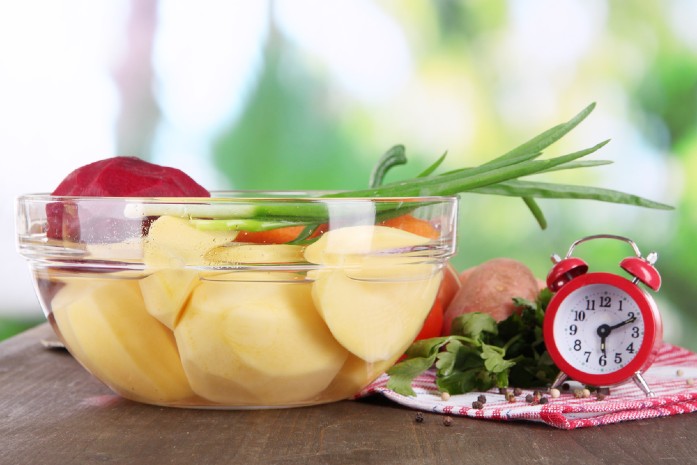Vegetables are chock full of valuable nutrients. However, some of these nutrients are light, oxygen, water and high-temperature sensitive. Here are some tips to help preserve the nutritional richness of vegetables.
- Wash vegetables quickly. Avoid soaking them in water as some of their vitamins, like vitamins B and C, are water-soluble.
- Scrub vegetables with a small brush rather than peeling them. The skin is a veritable gold mine of fibre, vitamins and minerals. If peeling is necessary, use a high-quality peeler to remove as little flesh as possible.
- Cook vegetables in large pieces. The larger the surface area that’s in contact with water or air, the greater the nutritional losses.
- Use quick cooking methods that require as little water as possible. Steaming, wok or skillet stir-frying, baking in foil, barbecuing and microwaving are ideal choices to cut down on nutrient loss. Speed is the watchword. The more your vegetables are “al dente,” the more nutritious and tastier they’ll be!
- Do not thaw frozen vegetables before cooking them. Thawing will soften them, and the water lost during the thawing process also leaches some vitamins away. Sauté them directly in a lightly oiled pan, instead.
Test your knowledge. True or false?
- Cooking enhances the bioavailability of antioxidants in carrots and tomatoes.
- Cooking with a microwave emits radioactive waves.
- Champêtre vegetables do not contain preservatives.
Answers
- Although most fruits and vegetables contain more antioxidants when eaten raw or lightly cooked, some exceptions exist. For instance, the carotenoids in carrots and sweet potatoes and lycopene in tomatoes, which have a preventive antioxidant action against diseases such as cancer, are at their peak when these vegetables are cooked and consumed along with fat. Whether you eat them raw or cooked, fresh or frozen, in soups or in salads, try to eat fruits and vegetables every day!
- With electromagnetic (not radioactive!) waves emitted by its inner walls, a microwave agitates the water molecules in food. Studies have shown no evidence of toxicity or carcinogenicity linked to the use of microwaves. Microwaving is an excellent way to cook to preserve the nutrients in food, as long as the food isn’t cooked in water.
- For optimal conservation, the Champêtre vegetables are cooked under vacuum and steam, which allows them to be preserved naturally and for a longer duration. The advantage of this method is that all the nutrients, vitamins and flavors of the vegetables are preserved during cooking, so the vegetable retains all its benefits.

